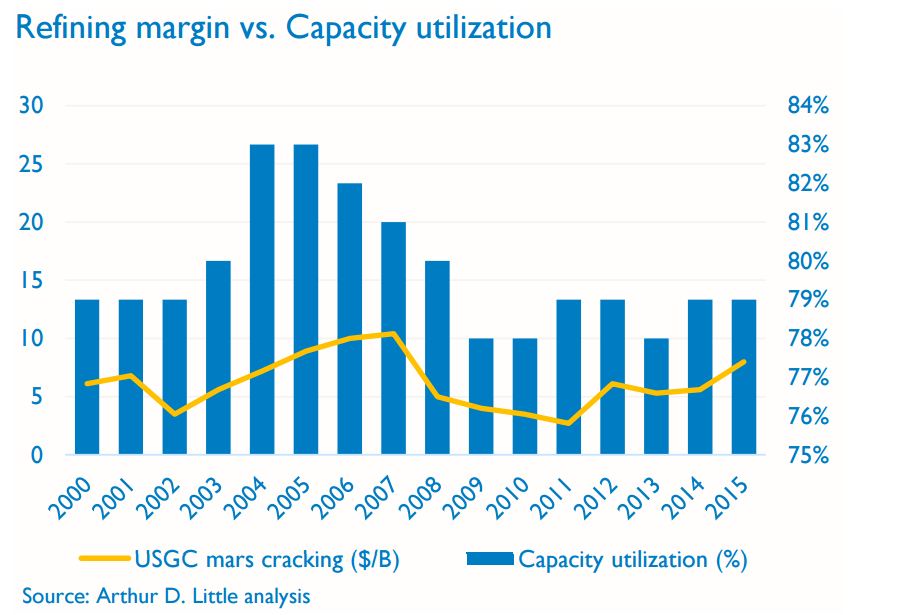
Petroleum downstream has been adapting to increasing competition and challenging regulations, and is suffering from lower returns than the upstream segment. Industry challenges will intensify, and new energy sources for mobility will impact the entire fuel value chain. Downstream players need to rethink their business models and innovate to protect their share of the mobility market.
Recent sector trends
Oil downstream has a long history of adapting to fuel-demand evolution by investing in transforming industrial installations, deploying new technologies and expanding service offerings to wholesalers and consumers. Refining and marketing have traditionally been the natural path for crude-oil producers towards vertical integration, aimed at capturing the full margin along the industry’s entire value chain. In the past, international brands invested heavily to expand and renovate retail networks, securing outlets for their refinery production and looking for opportunities to grow their non-fuel business.
For decades now, oil downstream has rendered lower returns than upstream, which has made integrated players lose interest in the segment. This fact, combined with intensified competition, tougher regulations, stronger bargaining power of dealers and mounting threats of environmental liabilities, has compelled major oil companies to divest some of their existing downstream operations and refrain from incremental investment in this segment.
On the other hand, a significant portion of the existing refining capacity worldwide is owned by national oil companies, and most of the foreseen capacity additions are expected to come from them. Despite the challenging business environment, national oil companies typically have different drivers and motivations to invest in refining, such as domestic energy supply security and promotion of industrialization, as well as employment in their host countries.

After a century of domination of refined products as the major energy source for mobility, different sources have recently emerged around the concept of the electric vehicles and are rapidly penetrating the transportation market. New participants in the business of battery-charging stations are gaining market share at the expense of traditional oil downstream players.



